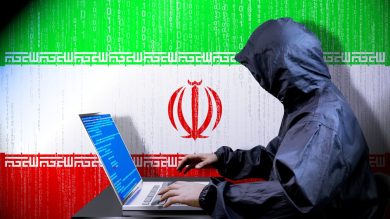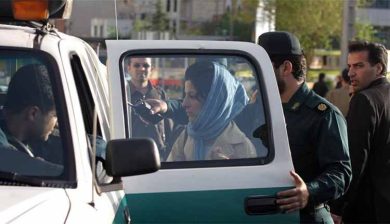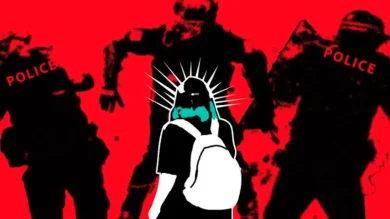In Iran, where freedom of expression is criminalized, art has become a powerful weapon of resistance—especially in the hands of women. Despite the Islamic Republic’s strict control over culture, media, and personal expression, Iranian women are using creativity to defy state narratives, reclaim public space, and express collective pain, hope, and power.
Artistic expression—through poetry, painting, dance, photography, graffiti, film, and music—is not only a form of identity and protest, but also a way to keep resistance alive in a society surveilled and silenced by the Islamic Revolutionary Guard Corps (IRGC). This resource explores how Iranian women use art as a nonviolent form of protest, the risks they face, and the global significance of their creative defiance.
1. The Context: Suppression of Expression in Iran
A. IRGC and Cultural Control
The IRGC acts as both a military and cultural enforcer, policing:
• Artistic content (books, films, exhibitions).
• Women’s clothing and appearance (through the morality police).
• Online creativity and digital art.
• Any cultural or creative form that challenges religious, political, or gender norms.
Female artists, in particular, face double oppression—as citizens challenging the regime, and as women resisting patriarchal controls.
B. Why Art Matters in Repressive Societies
In authoritarian regimes, where free speech is punished, art becomes:
• A tool for coded communication.
• A safe space for emotional release.
• A unifying symbol for protest movements.
• A mirror that reflects systemic violence and injustice.
For Iranian women, art bridges personal trauma and collective resistance.
2. Visual Arts: Painting, Graffiti, and Photography
A. Street Art and Graffiti as Silent Protest
While dangerous, graffiti has become a subversive form of rebellion. Artists like:
• Black Hand (Iran’s Banksy)
• Anonymous female artists
have used urban walls to display:
• Images of unveiled women.
• Slogans like “Women, Life, Freedom.”
• Paintings protesting acid attacks or mandatory hijab.
These works are usually removed within hours—but not before spreading widely on social media.
B. Photography and Feminine Visibility
Photographers like Shirin Neshat, though working in exile, use:
• Portraits of Iranian women in chadors with revolutionary poetry written across their faces.
• Visual contrasts between veiling and resistance, faith and individuality.
Photography has also documented the faces of protest, the funerals of martyrs, and the invisible burdens Iranian women carry.
3. Performance Art: Theater, Dance, and Public Acts
A. Illegal Yet Powerful: Dance as Defiance
In Iran, women are banned from dancing in public. Yet women continue to:
• Record themselves dancing to protest songs like “Baraye.”
• Dance in silent public demonstrations, filmed and posted anonymously.
• Use body movement as an embodied form of resistance.
These acts have led to arrests, but also viral solidarity across the world.
B. Theater and Living Testimony
Women-run theater groups, even in underground spaces, create performances:
• Based on real stories from women in prison.
• About forced marriage, hijab enforcement, and moral policing.
• Using minimal sets and masks to protect identity.
Theater becomes a way to speak the unspeakable, both to local audiences and international platforms.
4. Music and Poetry: The Soul of Resistance
A. Protest Music: From “Baraye” to Underground Artists
Songs like:
• “Baraye” by Shervin Hajipour, based on real tweets about the Mahsa Amini protests.
• Female versions of banned songs, shared anonymously on Telegram and Instagram.
These compositions have become anthems of the uprising, with many women recording themselves singing in defiance of the public singing ban.
B. Poetry: Historic and Revolutionary
Iran’s literary tradition includes iconic women poets like Forough Farrokhzad and Simin Behbahani, whose verses once challenged social norms.
Today, young Iranian women continue this legacy with:
• Instagram poetry accounts.
• Handwritten verses left at protest sites.
• Spoken word at underground gatherings.
Poetry is memory. It’s also mobilization.
5. Film and Documentary: Telling the Truth
A. Women Behind and In Front of the Camera
Despite severe restrictions, Iranian women filmmakers have:
• Directed films critical of gender laws and social oppression.
• Faced imprisonment and exile for their work (e.g., Jafar Panahi’s collaborators).
• Used fiction and documentary hybrid styles to evade censors.
Their work has reached global festivals, exposing what’s hidden in Iran.
B. Citizen Journalism and Mobile Films
During protests, women have documented:
• Police brutality.
• IRGC and Basij attacks on students.
• Last moments of protesters killed.
These videos are often the only evidence of IRGC crimes and have fueled international outrage.
6. Fashion and Clothing as Artistic Protest
A. Hijab as a Site of Resistance
Clothing is deeply political in Iran. Women protest by:
• Refusing to wear hijab in public.
• Designing symbolic outfits (white scarves, red paint, etc.).
• Holding silent fashion walks, where they wear what is banned.
Fashion becomes a visual rebellion—a refusal to be erased.
7. The Risks: Art Under Surveillance
Creating or sharing such art is dangerous:
• Women have been arrested, tortured, or forced to confess.
• Artists face exile, career bans, or harassment of their families.
• The IRGC monitors digital platforms, even using fake accounts to lure creators.
Yet despite the dangers, Iranian women continue to create—because silence, too, is deadly.
8. The Role of the Iranian Diaspora
Exiled artists play a vital role:
• They amplify internal resistance.
• Hold exhibitions, screenings, and concerts abroad.
• Raise global awareness, pushing for international solidarity.
They act as cultural bridges, preserving the movement’s momentum globally.
9. Global Solidarity: How the World Can Help
A. Amplify Their Art
• Share protest songs, poetry, and art on social media.
• Host exhibitions and performances highlighting Iranian women artists.
• Translate and subtitle Iranian creative works.
B. Protect Digital Spaces
• Provide secure platforms and tools for artists.
• Defend creators from online harassment and surveillance.
• Push social media companies to block IRGC censorship bots.
C. Support From Institutions
• Fund programs that support underground art movements.
• Offer asylum or fellowships to persecuted Iranian women artists.
• Pressure international festivals to feature Iranian feminist voices.
Conclusion: Creativity is Revolution
In Iran, art is not just expression—it is resistance. For Iranian women, creativity is political, personal, and powerful. It speaks when speech is forbidden. It moves when bodies are policed. It creates when the state tries to erase.
From murals to whispered poems, from defiant dances to silent fashion walks, Iranian women’s art is building a future of freedom. It demands not only to be seen—but to be heard, amplified, and protected.
Join Our Newsletter!
Stay informed with the latest updates, news, and ways to take action in the fight for justice and global security. Sign up now to get updates delivered straight to your inbox!





